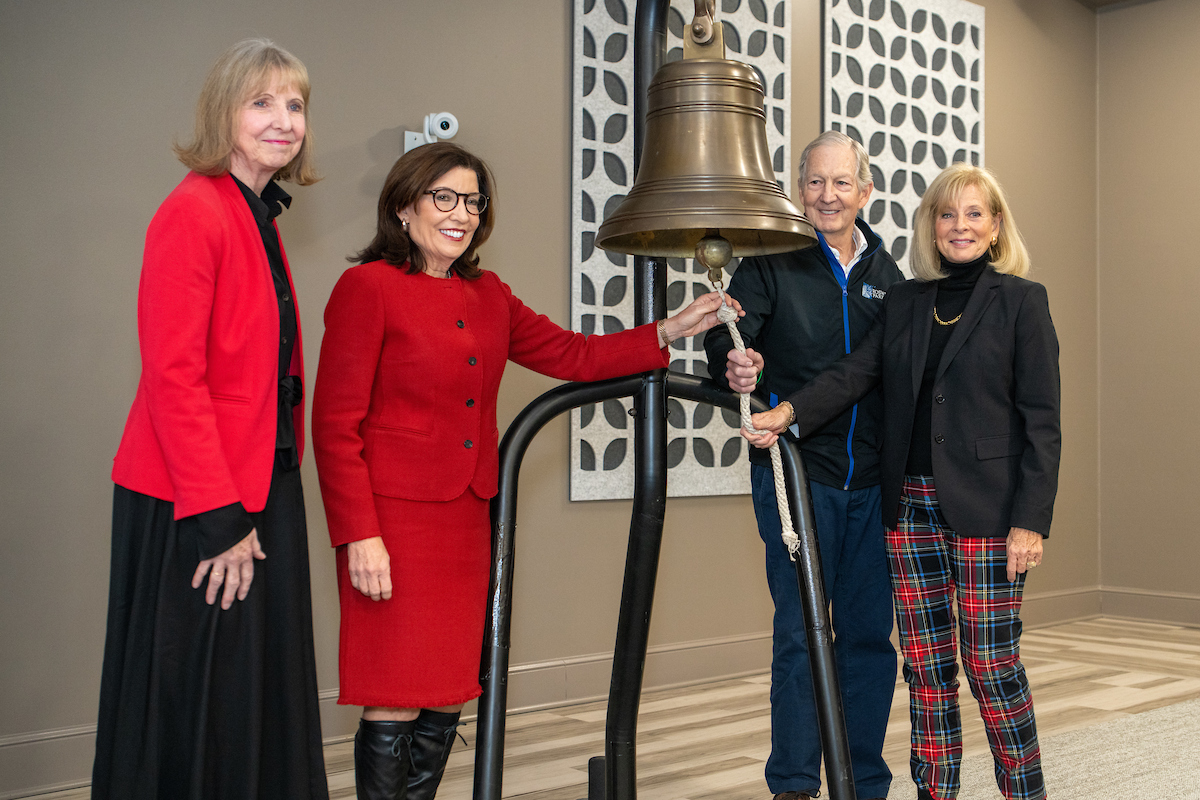Her students are young — only 3, 4, and 5 years of age — but Wright, a rising third-year doctoral student at UNLV and a Black pre-Kindergarten teacher, said it’s never too early to amplify voices of people of color, and make room for daily dialogue about their experiences in their community.
“They’ve already had experiences of racism, even at 4 years old,” Wright said, recalling a story from one of her students. “‘I went to the store, and wanted this candy, and this person was staring at me.’ That’s anxiety, and it’s related to the color of their skin. Anxiety can manifest in a child as young as three, and can be with them for the rest of their lives. So, it’s important to give them that voice to voice those experiences.”
But those conversations shouldn’t remain only within the circle of story time, or within the four walls of her classroom.
Wright has continuous critical conversations with her students about their lived experiences, and encourages parents to do the same within their homes and with the people around them.
It’s also not the responsibility for only families of color, or of teachers in diverse classroom communities to bear. White families, and white teachers in predominantly white classrooms also need to do their part in amplifying and building up diverse voices, stepping into the role of being an ally, and modeling that for their children.
The first step, Wright said, is for parents to do some self-reflection and learning themselves, too.
“It’s about parents educating themselves, and doing inward work by reading books about anti-racism, protests and demonstrations, and the stories of Black people,” Wright said. “Parents should be reading books written by Black authors, as well as teaching their kids.”
As the country continues to grapple with the consequences of systemic racism — fueled in part by the death of George Floyd at the hands of police — many white people are asking what they can and should do to confront the realities of racism in their own lives and in their own communities.
That inward work is a step that many are taking.
With summer here, and children at home, it’s a prime opportunity for families to dust off that reading list from last summer and refresh it with some new diverse titles and make a commitment to being an ally in the fight to end racism.
“The family needs to learn together,” says Amanda Melilli, head of the Teacher Development & Resources Library at UNLV. “We’re not going to get it right. We’re going to mess up all over the place. But our responsibility is to start showing our kids that we mess up in this.”
Something that everyone can do, Melilli said, is to diversify their at-home libraries.
“Take a look and see how much diversity is actually there,” Melilli. “As a librarian, this is what I’m passionate about, but even my home collection is not at the level where it should be. Seek out books for your children — from creators of color — and read them together. Make sure it’s a wide variety.”
And they don’t have to be 500-page books filled with lines and lines of text, Melilli said. Picture books and graphic novels are great tools — for any age, even adults — to begin conversations around race.
Some picture books are obviously very simplistic, Melilli said, but for heavier topics, it gives a quick entry point for conversations that families might not be exposed to. She suggests that families start by reading as many books as they can as a way of getting everyone thinking about and acknowledging that racial issues exist.
“I’ve learned so much about the lived experiences of others through picture books,” Melilli said. “We can learn so much about the world for ourselves through the voices of others who are different from us.”
White families also have to be continuously active in the pursuit of these materials. They can’t and shouldn’t rely on people of color to tell them what to read, and it can’t be a fleeting pursuit, one that lasts only through the course of a news cycle or two.
“This isn’t a trend right now,” Wright said. “We have to keep pushing on, and with kids, we have to keep on having those conversations.”
Melilli agreed.
“This is a lifestyle change,” she said. “Families need to commit to this being a family value. We can’t just sit here and wait for people of color to tell us what to do, and tell us about their experiences on a one-on-one basis. We don’t want to put the burden of learning back on communities of color.”
At the Teacher Development Resources Library on UNLV’s campus, Melilli and colleagues have worked in recent years to diversify their collection. They’ve focused their efforts around the We Need Diverse Books movement, and the library is open to anyone, not just teachers.
“We encourage UNLV families to see us as partners in meeting the reading needs of the young people in their lives,” she said.
For families who need some guidance on where to start, Melilli suggests visiting the library’s online guide. She’s also compiled a list of other resources for families who want to make a change:
Resources for Everyone
- We Need Diverse Books – Where to Find Diverse Books: Lists of websites for finding diverse children’s literature.
- UNLV’s Children’s and Young Adult Literature Guide
- Raising Luminaries: Advice and book lists for discussing hard topics with young children. Check out their Anti-Racism for kids 101 and 102 to get started talking about race with your kids.
- The Brown Bookshelf: Devoted to promoting Black voices in books for young people. Includes book lists, recommendations, and reviews.
- Rich in Color: A book review site for young adult books written by Black, Indigenous, and People of Color.
- African American Literature Book Club – Top 154 Recommend African-American Children’s Books: The AALBC has numerous resources for finding literature for young people featuring Black voices. Start with this list, but also follow the Books Published in the Last 60 Days and Books Coming Out in the Next 6 Months and Beyond for the newest books being published.
- Social Justice Books: Book lists and reviews of multicultural and social justice books for children as well as articles on social justice issues facing young people.
- American Indians in Children’s Literature: This site includes recommended books with authentic representation of American Indians in youth literature and educates readers on how much we accept (and more importantly expect) negative stereotypes of Indigenous people in the media.
- Teaching Tolerance: This website provides resources for educators on how to teach social justice and anti-bias in the classroom, but it is also helpful for caregivers who don’t know how to start having conversations with their children about issues of oppression and other tough topics.
Original post https://alertarticles.info




